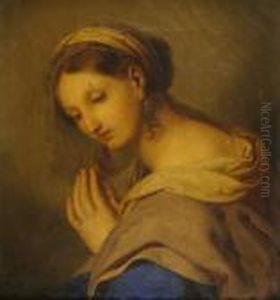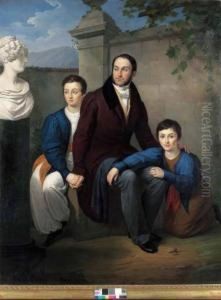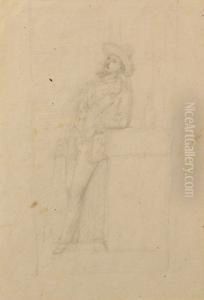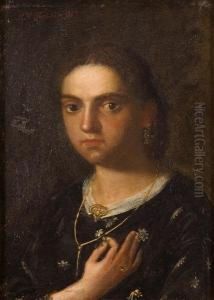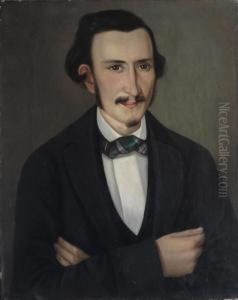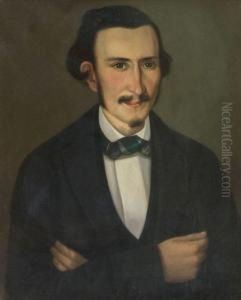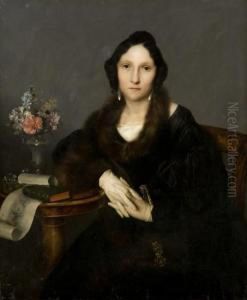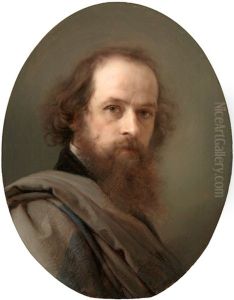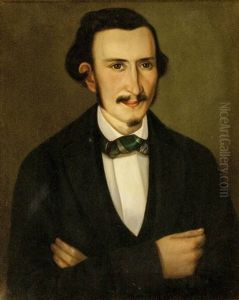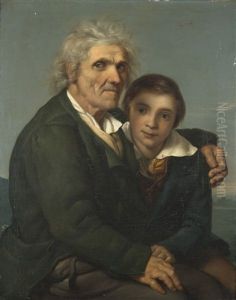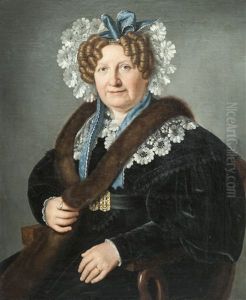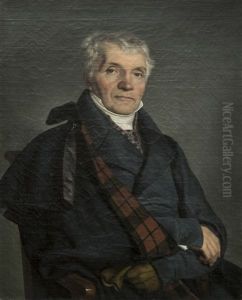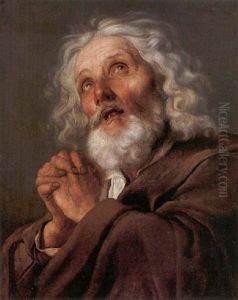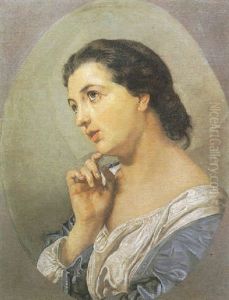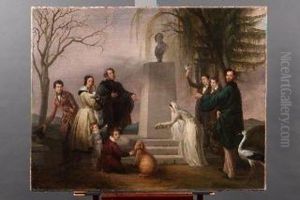Giacomo Trecourt Paintings
Giacomo Trecourt, born in 1812 in Bergamo, Italy, was an Italian painter who played a significant role in the 19th-century Italian art scene. He is particularly noted for his contributions to religious and historical painting, embodying the Romantic spirit that was prevalent in Europe during his time. Trecourt's early life and education in art were deeply influenced by the cultural ambiance of Bergamo, a city with a rich artistic heritage. He was initially trained locally, where he absorbed the fundamental techniques and sensibilities that would characterize his later work.
Trecourt's career was marked by his devotion to religious themes, a reflection of the period's broader cultural and artistic preoccupations. He was deeply influenced by the works of the old masters from the Renaissance period, which is evident in his meticulous attention to detail and the dramatic intensity of his compositions. Despite the prominence of religious subjects in his oeuvre, Trecourt also explored historical and mythological themes, demonstrating a versatility and depth in his approach to painting.
Throughout his career, Trecourt participated in various exhibitions and received commissions from significant religious institutions. His works are characterized by their vivid portrayal of religious narratives, often imbued with a sense of emotional depth and spiritual fervor. Trecourt's contribution to Italian art was not limited to his paintings; he was also involved in the artistic and cultural circles of his time, influencing and being influenced by his contemporaries.
Giacomo Trecourt passed away in 1882, leaving behind a legacy that continued to influence the Italian art scene. His works are preserved in several churches and collections in Italy, serving as a testament to his skill and dedication to his art. Trecourt's life and work embody the transition and tensions between the neoclassical and romantic movements, reflecting the complexities and dynamism of 19th-century Italian art.
